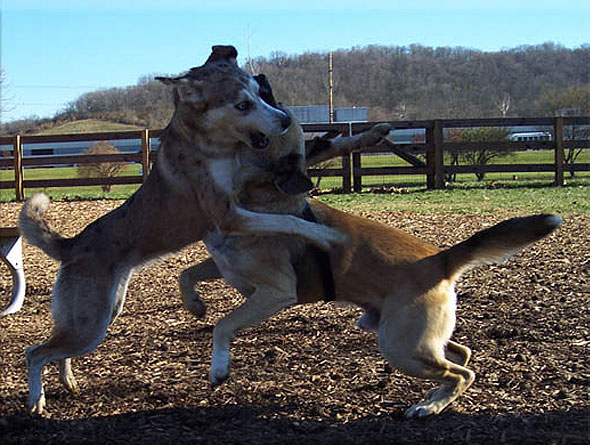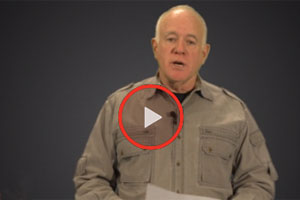Using Remote Collars on Reactive Dogs is a Terrible Idea

The Evolution of Training Methods Used to Control Dog Aggression with Electric Collars (Remote Collars)
This article is about the evolution of training methods for using remote collars to deal with dog aggression. The article is not about teaching people how to establish stimulation levels or how to condition a dog to remote collars.
I bought my first electric collar in 1979. It was a Tri-Tronics Pro 100 that cost $1,000.00. Today that collar is the model-T ford of remote collars.
Just as remote collars have drastically improved and changed over the years, so too have the methods of training and using remote collars.
One of the best quotes I ever heard is “WHEN YOU KNOW BETTER, YOU DO BETTER”. Hopefully, this will apply to those who read this article or listen to the podcast.
Years ago, we thought we could use an electric collar (e-collar) to stop dog fights and/or dog aggression by simply stimulating the dog while it showed aggression. One doesn't need to do this very often to quickly learn that this makes things worse.
Too often dogs that get stimulated while acting aggressively actually think the stimulation is coming for the other dog and they end up fighting harder. If they are on-leash and can't get to the other dog many will turn and redirect their aggression into their handler.
Those of us who have trained police service dogs or dogs in biting sports have seen young dogs being trained in protection work who turn and strike their handler as the handler pats their side to tell them that they are doing a good job.
When this happens it's just a reflex action on the part of the dog, it happens because the young dog is so pumped up that its brain stops working. This same thing can happen if a dog gets stimulated from a remote collar while it is in a high state of agitation and focused on another dog.
The next training method that came along involved stimulating the reactive dog when it just looked at another dog. We didn't wait until the dog started to bark or act aggressively. We kept a close eye on our dog and the moment he looked at another dog it got stimulated.
This worked with some dogs but with other more reactive dogs who got stimulated at too high of a level of stimulation, it resulted in the dog again redirecting their aggression into the handler which means they bit their handlers.
We found that lowering the level of stimulation often eliminated this redirection problem. We also learned to start this process at a greater distance from the second dog. The key is to find the lowest level of stimulation that caused the dogs to redirect their attention away from the second dog without redirecting aggression into the handler.
We learned that the levels of stimulation often need to change during training. Dogs that are faced with a higher level of distraction usually need a high level of stimulation than they would normally get. We also found that some dogs would need increasingly higher levels of stimulation because they became desensitized to lower levels while other dogs would redirect away from the second dog with increasingly lower levels of stimulation. The bottom line is, each dog reacts differently and it's the handler's job to read his dog and make appropriate adjustments. This topic is covered in our DVDs.
This system was trained by taking an aggressive dog for a walk in an area where the owner knew exactly where other dogs were located. The handler closely watches their dog and the instant the dog focuses on the other dog or dogs the handler says “NO” and stimulated their dog.
Another method involved asking a friend with a dog to meet you at a football field. Your friend would be at one end of the field and you at the other. You would walk towards your friend and the moment your dog saw that other dog it got stimulated.
This process would be repeated again and again so the handler could actually measure the progress by the yard lines markers. This method worked but handlers often found their dogs didn't GENERALIZE the training. This means the dogs wouldn't be aggressive at football fields but they would be aggressive when they saw a dog on the street.
The problem with this system, if you think about it, is the dog is initially getting a correction for something it doesn't understand. The dog looks at another dog and you say NO and it gets corrected. Does the dog think it's being corrected because it's walking in the wrong position, or because it's standing next to a garbage can on the street, or for a million other reasons only one of which could be looking at another dog.
The fact is a correction is only warranted when the dog knows exactly what you expect it to do but refuses to comply. That's not what happens in this system. The dog is being corrected and it's not clear why. It is not clear communication with our dogs.
Over time we have found a much better way.
Today we begin by teaching commands with marker training. One of the first commands we teach is “LOOK” or the “watch me” command. This simply means we want our dog to look at our face when we ask him. When it's trained with markers it's a much easier command to teach than to “Sit or DOWN”.
During marker training, we use high-value rewards. I have written extensively on high-value rewards in the article I wrote titled The Power of Training Dogs with Markers and the DVD by the same name.
The basic concept of this training is this: we say “LOOK” and we mark the dog with “YES” the moment he looks at us. After the “mark” we quickly deliver a high-value reward. When our reward delivery becomes an interactive event, it builds drive and engagement with our dog.
Engagement simply means the dog wants to be with us and it wants what we have. We teach them, thru repetition, that they can earn rewards if they do what we ask.
Engagement with some dogs means the handler needs to get excited about the dog complying, they need to give multiple high-value food rewards to extend the time the dog is engaged.
With other dogs, engagement means the handler plays tug for an extended period of time with a high-value toy. This work is covered in our DVD titled The Power Of Playing Tug with our Dog.
In the beginning stages of marker training, we don't use corrections for non-compliance. We simply say NOPE and repeat the command.
When the value of the reward is high enough the dogs quickly learn that NOPE means they are not getting their reward until they do what we ask.
Learning these skills is taught in four DVDs that are produced by Leerburg:
- The Power of Training Dogs with Markers
- The Power of Training Dogs with Food featuring Michael Ellis
- The Power of Playing Tug with Your Dog with Michael Ellis
- Advanced Concepts in Motivation with Michael Elis
Also available as online courses:
Engagement is the most important aspect of all dog training. Think about that statement for a second. If you don't have engagement then your dog doesn't want to be with you/ The only way you can train a dog without engagement with force.
Too often new trainers miss this point. They try and train behaviors before they have established engagement and then wonder why their dogs are not learning.
After we have engagement and after we have taught our dog the behavior LOOK. We then start the work to generalize the behavior by adding low-level distractions. The distractions we use will vary based on the temperament dog, the drive of the dog, and the environment we put the dog in.
It should be mentioned that all this work is done on-leash. Not only is the dog on-leash but it can also be wearing the remote collar (even though the collar is not yet being used in training).
We put the collar on the dog and take it off several times a day. Every time we put it on, we mark the collar going on and give it a reward as soon as it's on the dog's neck. Our goal is to desensitize the dog to wearing a remote collar.
When we start to train the LOOK command, we do it in a location where the dog feels comfortable. This means a distraction-free environment like your kitchen or backyard. The goal of this work is to teach the dog to stop doing what it's doing and LOOK at us when asked.
When the dog learns LOOK in our house, we then teach the dog to GENERALIZE the LOOK command in our back yard, in our front yard, in our neighbors' yard, at the mall parking lot down the street. In other words, we teach the dog to LOOK when it's in a distracting environment.
The key to this training is to gradually increase levels of distraction. We don't go from our kitchen to standing outside of a dog park and expect a dog aggressive dog to comply.
Distractions can start out being a family member tossing a ball, or it could be the dog's favorite toy lying on the ground or it could be a family member just walking past.
New trainers need to learn to take the time it takes to teach each level of distraction. When we move locations, we are actually introducing new distractions, so we need to help our dog. If this means we lure with a reward, then we do it. If we find the dog simply can't focus (because we made the mistake of adding too many distractions at once) we back up the training and find a location that is less distracting.
During the learning phase, we need to be very careful about introducing corrections for not minding. Always remember that correcting a dog that has not generalized the command is an unfair correction.
This is where the hard part of dog training comes in, that is in determining if the dog is intentionally blowing you off when ask it to do something because he doesn't want to do it or is the dog not complying because it simply doesn't understand what we are asking him to do because it has not generalized the command.
Some words of advice are to err on the side of your dog not understanding what you are asking. You will never hurt anything if you help the dog, you will damage your relationship with your dog if you give the dog a correction and it doesn't know what it's being corrected for.
But when we reach the point that we are 110% sure the dog knows what's being asked and we know it has generalized the behavior we have then reached the point where we can introduce corrections for non-compliance.
At that point we take the dog to a location that has a level of distraction that we feel will cause the dog not to comply, or we go to a neutral location, and we add distractions.
If the dog is asked to LOOK and it refuses, we simply say NO and give a correction by popping the leash.
We are teaching the dog that if it refuses the command, it is going to be told NO and it's going to get a leash correction. This process continues in the face of higher and higher levels of distraction.
With dog aggressive dogs, we don't add another dog as a distraction in the beginning. On a scale of 1 to 10, another dog is a level 10 distraction for dog aggression.

A similar concept applies to corrections. We don't start with a level 10 correction; we need to experiment and find the point of compliance. Some dogs may only need a voice correction, while others need a level 1 or level 2 correction while other dogs need level 5 or level 7. Correction levels will change depending on the level of distraction the dog is put in.
This is where the art of dog training comes into play, every trainer needs to establish their dog's levels based on the temperament, the drive, and experience of their dog in training along with the environment the handler puts their dog in.
So when a dog doesn't comply with a command the handler has to think about his options:
- Should he say NOPE and then help the dog comply?
- Should he increase the value of the reward system (many times new trainers don't use high enough value rewards)?
- Should he change the environment to reduce the level of distraction?
- Should he stay in the same place and just add distance between the dog and the distraction?
- Or has he reached the point where it's time to correct the dog to the point of compliance? Note: If a correction is used, it's absolutely imperative the dog knows the meaning of the command and it has chosen not to comply.
When a dog understands what a correction is and why it is getting corrected, it is ready to be introduced to the remote collar in training.
But we can't say this enough: “Before a remote collar is used, the dog must understand what a leash correction is and why it's getting a leash correction.”
The handler must also have taken his dog through the process of determining the working level of stimulation to use in training along with the conditioning phase of remote collar training. That work is beyond the scope of this article and is covered in detail in our DVD.
The foundation for remote collar training with aggressive dogs is dealt with by the handler putting his dog in situations of increasing higher levels of distraction while he gives the “LOOK” or “WATCH ME” command.
If the dog doesn't comply with LOOK, it is told NO LOOK and it gets a leash correction paired with a burst of continuous low-level stimulation from the collar. The level of correction must be strong enough to cause the dog to redirect and comply with the LOOK.
If the dog has been properly conditioned to the collar it will understand he is getting corrected. There will not be any confusion in the dog's mind.
When the handler feels that his dog is ready to add other dogs as distractions, he can then take his dog to a location where his dog can just see another dog. The moment his dog sees a dog, he commands LOOK and if necessary, gives a leash correction paired with remote collar stimulation.
At this point, our system may seem like the old training methods but in fact, it's very different. The difference is that we are correcting a dog for not LOOKING when asked. The dog understands it is being corrected for not complying with LOOK.
This is a very clear distinction in the mind of our dog. Once the foundation has been properly established there isn't any confusion about what is happening.
When the dog does redirects back to us (with or without a correction) we turn compliance into a party. We get excited, we deliver multiple food rewards (if we are using food), we can even move back away from the other dog and draw our dog with us during the engagement process.
Simply put our job is to engage our dog and keep it engaged in the face of other dogs. We do whatever we have to keep the dog engaged. Too often, new trainers don't engage their dogs for long enough periods of time. Engagement is not about giving a food reward or just handing a dog a tug toy. Engagement is about creating extended periods of time that the dog is focused on us and wants to be with us and wants what we have.
When we get engagement in the face of another dog, we are making headway in dealing with dog aggression.
Our long-term goal is to gradually get our dog closer and closer to other dogs and still be able to get command compliance and engagement.
But whenever our dog will not comply with LOOK or WATCH ME it gets a leash correction paired with a short bust of continuous stimulation from the remote collar.
A point to think about is if the dog refuses to play after a correction, be it a leash or remote collar correction the level of that correction may have been too high. So keep that in mind as you work with your dog.
We also need to make the point that with dog aggressive dogs, we would never go into a dog park. We here at Leerburg strongly disapprove of dog parks because they are very dangerous places for our dogs, but we will use them in our training by going near a dog park. We will gradually take our dog closer and closer to the park (without going inside) with our goal being to keep the dog engaged.
Before closing this article, I need to talk a little about why we here at Leerburg refuse to sell some of the cheaper brands of remote collars.
To train dogs with low-level stimulation, we need to have a collar that delivers the exact same consistent level of stimulation every time it's used. These cheaper collars are not consistent. Every time you use them, they produce a slightly different level of stimulation, even though the settings have not been changed.
This is blatantly unfair to our dogs.
To train in this system, we also need a collar that has a wide range of stimulation levels – at least 100. This allows us to fine-tune a collar to fit the exact level each dog needs. Cheaper collars don't have this option.
And finally, we here at Leerburg will only sell quality remote collars that have an excellent service history. People who use remote collars for off-leash control want a collar that works all the time and the fact is, these cheaper collars simply break too often.
In closing, I believe that a good remote collar is the best dog training tool a serious strainer can use. Unfortunately, like every training tool ever invented, electric collars are often abused by people who lack training in how to use them.
Over the past 34 years, I have seen the good, the bad, and the ugly of electric collar training. Those dog trainers who take the time to learn how to incorporate a remote collar into their training program will have one of the best off-leash tools there is.
If you would like more information on training with e-collar, I recommend the Q&A section on our website along with the DVDs we have produced on remote collar training. We have a lot of information to help you.











Ask Cindy.